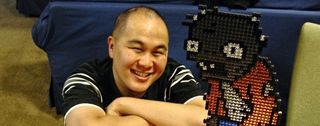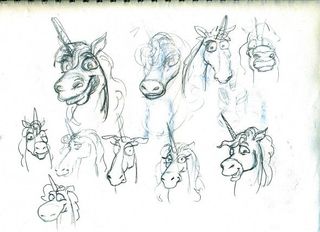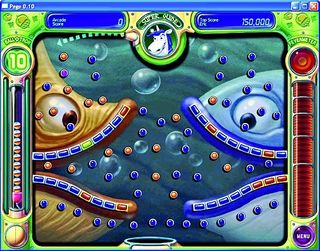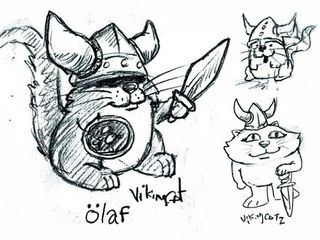Smart Casual - How PopCap conquered casual gaming

From the archives, here's a feature on the mammoth casual games developer that originally ran in PC Gamer UK issue 220.
Sitting on the floor of Benaroya Hall in Seattle, I'm depressed as hell. I've come to the Casual Connect Conference 2010 to hear the makers of casual and social games share their ideas, but in three days of lectures I haven't heard a single idea about games.
Instead they're talking about how designers don't matter. They're talking about how psychological tricks can turn their audience into zombies. They're talking about how to use metrics to better monetise your mum. This isn't just the industry's business men and women talking, either; these are the people who actually make the games. At a point in history when a new and huge mainstream audience is trying computer games for the first time, our ambassadors aren't interested in talking about how to make something fun.
The scene couldn't have been more different three days earlier, just a few blocks away from Benaroya Hall at PopCap's headquarters. They've been playing Risk with their office space for the past ten years, starting with just a couple of desks and expanding through their skyscraper in all directions. They showed me the workmen putting the finishing touches to their most recently conquered floor, where every wall is coated with IdeaPaint. It turns every surface into a whiteboard. Designers, programmers and artists will hole up inside each room for years – as long as it takes to make something great – and will literally cover the walls with game ideas.

Since 2000, PopCap have grown from three guys working from their homes to an employer of hundreds with offices in Seattle, San Francisco, Chicago, Dublin and Shanghai. Along the way they've made some of the most successful and beloved games on the PC: from Bejeweled to Peggle to Plants vs Zombies.
I came to Seattle not to be depressed, but to speak to the founders and designers of PopCap. Who are they? What makes them tick? How did they get to be so huge, and where are they going? What is the secret behind this very silly company? Like so many great stories, it starts with a game of strip poker.
In 2000, John Vechey, Brian Fiete and Jason Kapalka left their jobs at large online gaming companies to start their own. It wasn't going well. The idea was to create browser games and make money from ads, but the dotcom bubble had burst and their first game was garnering complaints.
The biggest gaming news, reviews and hardware deals
Keep up to date with the most important stories and the best deals, as picked by the PC Gamer team.
The game was Foxy Poker. “This is not in our corporate histories,” admits Jason Kapalka. “We thought, 'We can do this thing, then we can sell it and take the money to do whatever.' But we were still trying to do this advertising stuff where they wouldn't allow nudity, so there was always some object interposed. There's no actual nudity. We did get a lot of complaints because you had to play a long time to get to the final stage of undress, and when you did there were some vases and things.”

If strip poker seems an odd fit for PopCap, keep in mind that their company was called Sexy Action Cool. The name was taken from a Rolling Stone review quote for the movie Desperado: 'Antonio Banderas is the ultimate in sexy action cool.'
PopCap's history is filled with discarded names.
“It was a pretty good strip poker game,” says Jason, “But we found we didn't really have the heart to deal with any of the porn companies because they were just too scummy. We abandoned our short-lived effort to be a company like that.”
Their first success came in the form of their next game: Diamond Mine. Today it's called Bejeweled.
“I'd seen a game that used some similar rulesets to Bejeweled,” says John Vechey. “But there was no animation, no sound effects, and they had very indifferent rules. We simplified it and changed it and then I sent a link out, Brian did a version that was just circles, and then Jason added the gem graphics. So it was three days of boom, boom, boom. And then we had it.”

Is this just another case of a casual game developer making a derivative dollar? Sort of. Bejeweled certainly wasn't the first of its kind, as John admits. The first match-three PC game seems to be Shariki, a 1994 DOS game by a Russian programmer called Eugene Alemzhin. On top of that core concept, Bejeweled added a timer and bonus points, but PopCap's largest contribution was polish. Even in its most basic version, Bejeweled is testament to the human mind's ability to be endlessly entertained by things that tinkle.
Struggling to make their advertising model work in the short-term, they tried to sell Bejeweled outright for $60,000 to EA. EA said it wasn't even really a game. They turned to MSN Games, offering it for $30,000. Microsoft said no.
But they had a different idea. “Microsoft said they would do a licensing fee for $1,500 dollars a month,” says John. “We had two games at the time, we had Bejeweled and our second game, Alchemy. $1,500 a month times two is $3,000 a month. If we get about ten of these we're actually OK, right? And our third game we licensed exclusively for $10,000 a month.”
Licensing instead of selling the game outright meant that they weren't losing complete control. While Diamond Mine appeared on the MSN Games portal, they could also put it on their own site. The founders realised they needed a more public face, and that meant a company name that better matched their intended audience. They settled on the lid to a bottle of soda: a pop cap. PopCap was officially born.

“We ended up not being a great business, but for three guys it was OK. But then Bejeweled experienced disproportionate success to any money we were making, I think it was getting 50-60,000 peak users during the day. A lot of people were playing it, and it took a while for us to find the financial success behind that.”
They found it by offering a premium version of the game. You could play Bejeweled for free at any number of online portals – you still can, even sometimes still named Diamond Mine – but if you liked it, you could grab a downloadable version. After an hour's trial, you could pay $20 to unlock it.
“Now we were making $30-40,000 a month just from that one downloadable version on our website,” says John. It provided stability for the company.
Rather than trying to build on that stability and grow the company, the founders were more concerned with having and making fun.
“Brian and I moved to Argentina for a couple months,” says John. “We were making money and we wanted to learn Spanish, and they had good steak and wine and we could work there.” At the time, PopCap still didn't have an office. The three of them worked from home.

“We were having fun. We were making games. We'd spend four days playing Counter-Strike,” says John. “Well, Brian and I would spend four days playing Counter-Strike and lie to Jason. We'd tell him what we were working on was really hard. He didn't understand technology at the time.”
Given such humble origins, it's important to put the game's success into perspective. Bejeweled has now sold over 25 million copies, and the series as a whole – which includes Bejeweled 2, Bejeweled Twist and Bejeweled Blitz – has sold over 50 million. It is a gaming juggernaut.
When their first office opened in 2002, they focused on hiring artists and other game designers. “We didn't want to be anything more than a game developer. That was really the focus,” says John. They contracted George Fan – who would later make Plants vs Zombies – as employee number five. Sukhbir Sidhu, the designer of Peggle, was employee number eight.

“The first conversation I had with Jason when I talked about coming to work for PopCap, we talked about the kinds of games they wanted to make,” says Sukhbir. “I actually mentioned pachinko at that time.”
Pachinko is a Japanese sensation. The player fires a ball up into the machine as in pinball, and the ball then cascades back down, striking dozens of small pegs as it falls. There are no flippers to send it back up, but if it falls in certain pockets at the bottom, it triggers a jackpot that drops more balls. The balls that are won are then exchanged for tokens that can be traded for prizes.
Sukhbir had played a Godzilla pachinko machine that Jason had in his apartment in San Francisco. “It was really mesmerising and I couldn't believe how fun it was. That experience always stayed with me,” says Sukhbir.
“The problem was it was all luck. The fun in pachinko is the gambling aspect of it – the thrill of it – even though it's mesmerising it's hard to get that same feeling in a game.”
Most Popular


